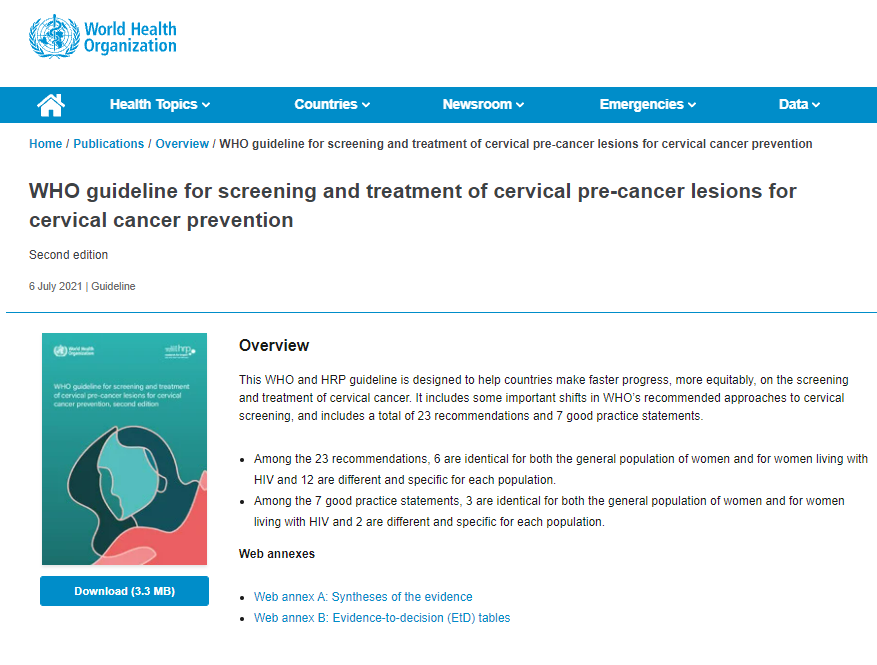Cervical cancer is a leading cause of mortality among women. On July 6, 2021, the WHO released the second edition of its Guidelines for the Screening and Treatment of Cervical Precancerous prevention.
In the guideline, there are two distinguished approaches to screening and treatment.
1. Screen-and-treat approach
In a screen-and-treat approach, treatment is provided based on a positive primary screening test alone, without triage (i.e. no second screening test and no histopathological diagnosis).
2.Screen, triage and treat approach
In a screen, triage and treat approach, the triage test is done if the primary screening test is positive, and the decision to treat is made when both the primary test and the triage test are positive.
According to the update of this guideline, simpler and more accurate detection methods for HPV screening are the trend. By selecting an accurate and efficient primary screening method, it can be directly combined with clinical symptoms for judgment and treatment or combined with secondary triage to further determine the follow-up treatment.

Regarding the screening method, WHO recommends using HPV DNA detection as the primary screening test rather than VIA or cytology in screening and treatment approaches among both the general population of women and women living with HIV. HPV DNA detection can screen for high-risk genotypes of HPV for cervical cancer and has more objective results compared to tests that rely on visual inspection.
The WHO also recommends that general population of women be screened every 5-10 years after age 30, either with HPV DNA "screening treatment" or HPV DNA "screening, triage and treatment".
The HPV nucleic acid test kit developed and manufactured by Mole is highly compatible with the latest WHO guidelines. Our products can be used to screen for precancerous cervical lesions and cervical cancer with four features:
Fast Detection: Using multiplex fluorescent PCR technology, the whole process only takes 90 minutes with 94 samples.
Accurate Result: Verified by clinical trials and gene sequencing, the reagent sensitivity is as high as 99.51%, and the high-risk compliance rate is 98.32%.
Full Detection: One tube can detect 24 HPV 24 genotypes at the same time, covering 18 high-risk strains.
Patient Management:A variety of detection solutions for different groups of people, which is beneficial to risk stratification and patient management.
Specific Product Introduction:
S014: This kit is intended to qualitatively detect the DNA of 24 genotypes of HPV
S015: This kit is intended to qualitatively detect the DNA of 24 genotypes of HPV but identify the HPVs as high-risk group, medium-risk group, or low-risk group
S021: This kit is intended to qualitatively detect 2 high risk types 16, 18 and screening other 16 medium-high genotypes in 1 reaction
Among the reagents on the market using multiplex fluorescence PCR, Mole's HPV diagnostic reagents cover the largest number of HPV genotypes with easy handling and high sensitivity. Our HPV preliminary screening program has the advantages of unique prospect and cost optimization, which is widely praised by clients. Mole is actively involved in accelerating the elimination of cervical cancer and is dedicated to preventing women from cervical cancer in the world.